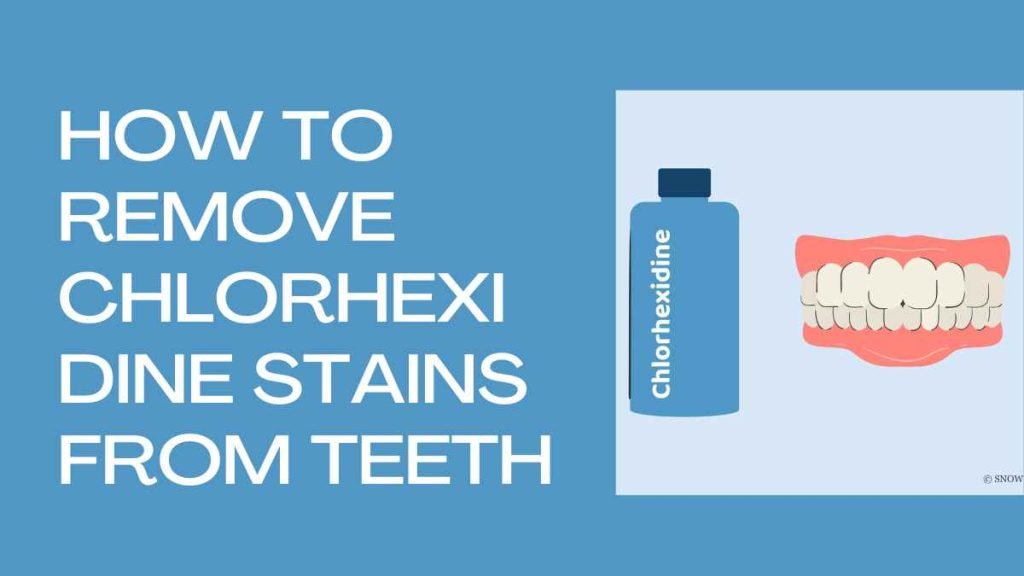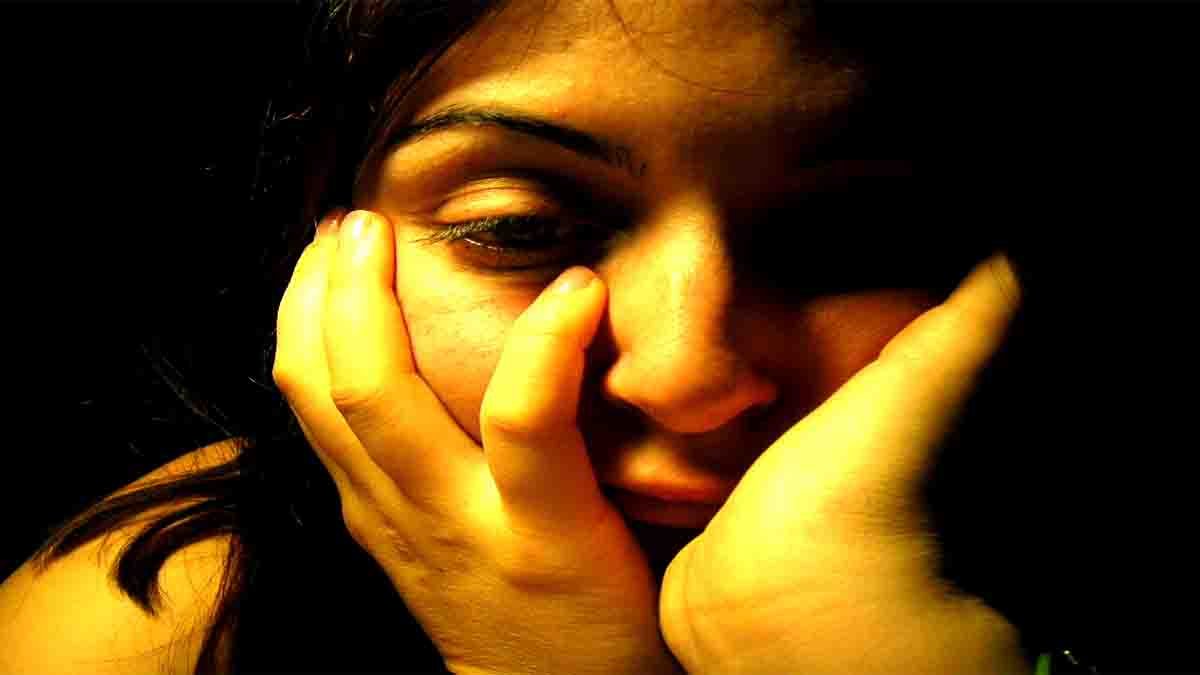How to Remove Chlorhexidine Stains from Teeth! Chlorhexidine stains on teeth can be a perplexing issue, leaving many individuals puzzled about how to effectively remove them. If you’ve found yourself in this situation, fret not! This comprehensive guide, we will explore How to Remove Chlorhexidine Stains from Teeth. Here will walk you through everything you need to know about chlorhexidine stains, their causes, and most importantly, the step-by-step methods to remove them. Bursting with valuable tips, tricks, and alternative methods, this article will ensure your smile stays bright and stain-free.
Table of Contents
Introduction
Chlorhexidine, a powerful antiseptic, is often prescribed by dentists to fight off oral infections. However, its side effect, teeth staining, can be a real hassle. The stains are caused by the interaction between chlorhexidine and substances like tea, coffee, or tobacco, leaving yellow or brownish marks on your teeth. But worry not, with the right approach, these stains can be effectively removed.
What is Chlorhexidine Stain?
Chlorhexidine stain is a dental issue that occurs when chlorhexidine, a common ingredient in mouthwashes and oral rinses, reacts with external substances, leading to discoloration of the teeth. These stains are notorious for their persistence, making regular oral hygiene practices seemingly ineffective in their removal.
How to Remove Chlorhexidine Stains from Teeth: A Step-by-Step Guide
Here you can checkout the step-by-step guide about How to Remove Chlorhexidine Stains from Teeth:
Total Time: 10 minutes
Regular Brushing and Flossing
Start with the basics. Brush your teeth at least twice a day with a fluoride toothpaste and floss daily. This regular oral hygiene routine can prevent further staining and maintain overall oral health.
Use Baking Soda
Baking soda acts as a mild abrasive, helping to remove surface stains. Create a paste by mixing baking soda with water and gently brush your teeth with it. Do this once a week to avoid damaging your tooth enamel.
Activated Charcoal
Activated charcoal is known for its absorbent properties. Apply a small amount on your toothbrush and brush your teeth gently. Rinse thoroughly afterward. However, use this method sparingly as excessive use might erode your enamel.
Hydrogen Peroxide Rinse
Dilute hydrogen peroxide with water (1:1 ratio) and swish it around your mouth for 30 seconds. Spit it out and rinse your mouth with water. Hydrogen peroxide helps in breaking down the stains, but it should be used cautiously to prevent gum irritation.
Professional Dental Cleaning
Visit your dentist for a professional cleaning. Dental professionals use specialized tools and techniques to remove stubborn stains effectively. This ensures a thorough clean, reducing the chances of stains reoccurring.
What are the Causes of Chlorhexidine Teeth Staining?
Chlorhexidine stains occur due to the interaction between chlorhexidine and substances like tea, coffee, red wine, or tobacco. These substances contain chromogens, pigmented molecules that easily bind to the tooth enamel, causing discoloration over time. Additionally, poor oral hygiene can exacerbate the staining, making it more challenging to remove.

Alternative Methods for Chlorhexidine Stain Removal
Oil Pulling
Oil pulling involves swishing oil (usually coconut oil) in your mouth for about 20 minutes. It’s believed to remove toxins, including stains, from your teeth. While scientific evidence is limited, some people report positive results.
Dental Whitening Strips
Over-the-counter whitening strips can help reduce surface stains. These strips contain a peroxide-based gel that bleaches the stains, gradually restoring the natural color of your teeth. Follow the instructions carefully for best results.
Common Mistakes to Avoid
Overusing DIY Methods: While home remedies are effective, overusing them can damage your enamel. Use these methods in moderation to prevent enamel erosion and tooth sensitivity.
Ignoring Regular Dental Checkups: Regular dental checkups are crucial to maintaining oral health. Dentists can identify and treat stains early, preventing them from becoming deeply embedded.
Tips and Tricks
- Stay Hydrated: Drinking water helps wash away stain-causing substances, reducing the chances of discoloration.
- Limit Stain-Causing Foods and Drinks: Cut down on tea, coffee, red wine, and tobacco to minimize the chances of new stains forming.
- Chew Sugarless Gum: Chewing sugarless gum stimulates saliva production, which naturally cleanses your mouth and teeth.
Facts About Chlorhexidine Stains
- Chlorhexidine stains are extrinsic: These stains occur on the surface of the teeth and can often be removed with proper cleaning techniques.
- Preventable with proper oral care: Regular brushing, flossing, and dental checkups can prevent chlorhexidine stains from occurring in the first place.
- Different people react differently: Not everyone experiences chlorhexidine stains to the same degree. Factors like oral hygiene habits and diet play a role in stain formation.
Conclusion
In conclusion of How to Remove Chlorhexidine Stains from Teeth, tackling chlorhexidine stains is a common challenge. By adopting a diligent oral hygiene routine, using safe and proven methods for stain removal, and seeking professional dental care when needed, you can regain your smile’s natural radiance. Remember, persistence and patience are key in this journey to stain-free teeth. Here you can checkout that How to Relieve Pain from Shifting Teeth.
FAQs About How to Remove Chlorhexidine Stains from Teeth
Can chlorhexidine stains be completely removed at home?
Yes, mild to moderate chlorhexidine stains can often be removed at home using various methods. However, for stubborn or severe stains, it’s advisable to seek professional dental assistance.
How long does it take for home remedies to show results?
The time it takes to see results varies based on the severity of the stains and the method used. Some people may notice improvement within a week, while others might take a few weeks to see significant changes.
Are there any side effects of using hydrogen peroxide for stain removal?
Using hydrogen peroxide in moderation is generally safe. However, excessive use can lead to gum irritation and tooth sensitivity. It’s crucial to follow the recommended dilution ratios and not use it too frequently.
Can chlorhexidine stains be prevented?
Yes, chlorhexidine stains can be prevented by maintaining good oral hygiene practices, limiting the consumption of stain-causing substances, and scheduling regular dental cleanings.
Are there any foods that can help prevent chlorhexidine stains?
Crunchy fruits and vegetables like apples, carrots, and celery act as natural abrasives and can help prevent stains by removing surface debris from the teeth.
Will dental insurance cover professional stain removal procedures?
The coverage for professional stain removal procedures varies based on the dental insurance plan. It’s best to check with your insurance provider to understand the extent of coverage for such treatments.
Can chlorhexidine stains lead to other dental problems if left untreated?
While chlorhexidine stains themselves are not harmful, ignoring them and not addressing the underlying causes (such as poor oral hygiene) can lead to more serious dental issues, including tooth decay and gum disease.


